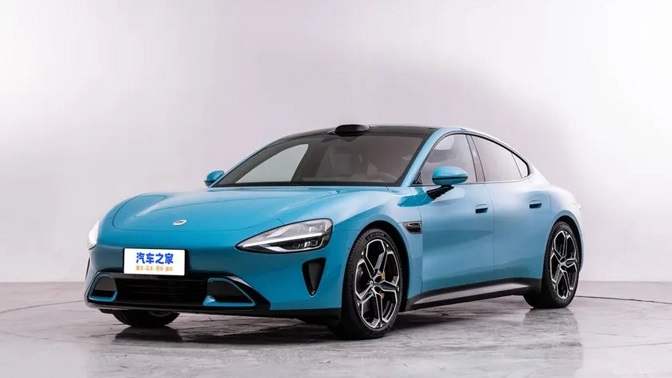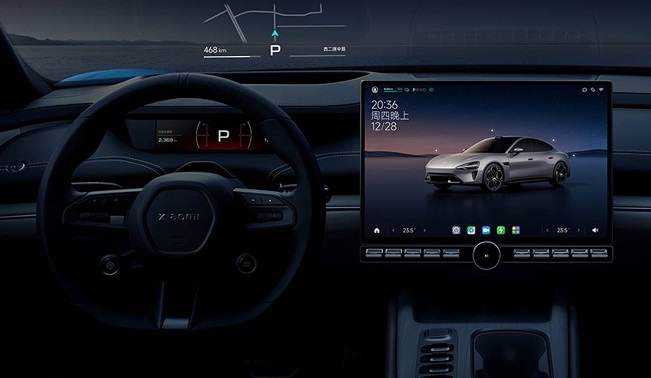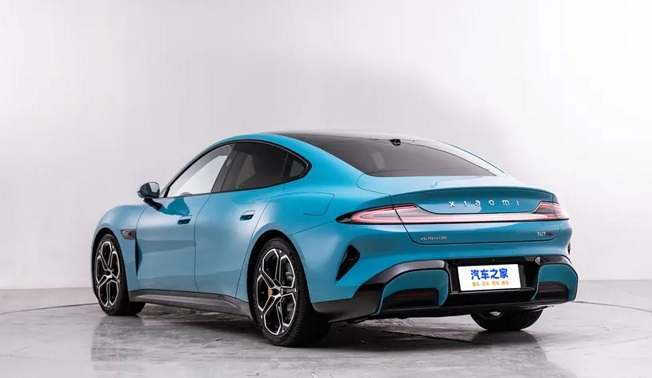Sales of the Xiaomi SU7 start, which will be cheaper than the Tesla Model 3
Sales of the Xiaomi SU7 start, which will be cheaper than the Tesla Model 3
We are already aware of every element and the Xiaomi SU7’s cost.
Today was the designated day to uncover the final details regarding the Xiaomi SU7 that we were still unaware of. The Chinese brand’s first electric vehicle was introduced at an event with a starting price less than anticipated.

With dimensions of 4,997 mm in length, 1,963 mm in width, 1,440 mm in height, and 3,000 mm in wheelbase, the SU7 is an executive saloon (E category). The CEO of Xiaomi, Lei Jun, notes that while the car isn’t to compete with any one competitor, its compact size makes it a viable option instead of the BYD Han, BMW i5, Mercedes-Benz EQE, Porsche Taycan, and Tesla Model S.
Its design is what draws your eye to it initially. The external design of the vehicle is quite striking, with a front end with a sharp and aggressive design, headlights with a polygonal form reminiscent of the first-generation Porsche Taycan, and air inlets for cooling the brakes.
The rear section takes on a fastback aspect; here, the styling is reminiscent of Porsche vehicles, and the most potent version features an active spoiler. A component that increases the aerodynamic load by 130 kg.
Xiaomi SU7 Interior
The three-spoke steering wheel and the red accents surrounding the driving mode switch button accentuate the vehicle’s sporty appearance. The SU7’s screens consist of a 16.1-inch 3K infotainment system screen and a 7.1-inch instrument panel. Furthermore, a 56-inch Head-up Display with a maximum brightness of 13,000 units.


Despite Xiaomi’s dedication to technology, the SU7’s interior still has a majority of its physical buttons. Features include ambient lighting, sporty Nappa leather seats, a 5.35-meter glass roof square, a sound system with 15 speakers, wireless mobile charging, and more. Regarding the trunk, the front has a significantly greater volume than typical (105 liters), while the back can hold up to 517 liters.
Powered by the Snapdragon 8295 CPU, the Xiaomi SU7 offers CarPlay, Airplay, and Xiaomi ThePaper OS, which includes superior voice recognition.
There won’t be a self-driving system absent from your appointment; there will be two options. A simple one named Pilot Pro will have 24 components, including radar, Lidar, and high-resolution cameras. It will be managed by an Nvidia Origin processor that can handle 84 TOPS. The second choice is the Pilot Pro Max, which has two Nvidia Origin processors with a 508 TOPS processing capacity and a rear millimeter wave radar.
The end product will be machinery that can operate the car in many situations, such as parking lots and challenging environments.
Xiaomi SU7: Technical characteristics and prices
The Xiaomi SU7 will come in three different configurations: standard autonomy with rear-wheel drive, long autonomy with rear-wheel drive, and a version with two motors, four-wheel drive, and more autonomy.
With a rear propulsion system generating 222 kW (299 HP), the single-engine variant can reach 100 km/h in 5.28 seconds. It has a 73.6 kWh Fudi lithium-fluorophosphate battery installed, giving it a 700 km CLTC range.
The propulsion mechanism is the same in the intermediate version, but the battery capacity is 94.3 kWh. A group of cells known as CATL NCM. A slightly slower variant (5.7 seconds to 100 km/h) to reach 830 km CLTC of autonomy.
The choice is the third one. The vehicle comes with two engines, 500 kW (673 HP), and a devastating 838 Nm of maximum torque. You can reach 100 km/h in under 2.78 seconds with this. Extremely near to the Tesla Model S Plaid’s 2.1 seconds, which, as we recall, has 347 horsepower more than the Xiaomi model. Additionally, it has a 101 kWh CATL ternary lithium battery, which has an authorized range of 810 km CLTC.
Of course, The authorized and actual figures typically differ from one another. However, in this instance, the effort Xiaomi made to improve the aerodynamics of an SU7 that was ranked among the best in the industry with just 0.19Cd. Far less than its primary category competitors.
The SU7’s most powerful version can access powers of up to 600 kW thanks to its 800V architecture, or 871 V precisely. That will enable it to recover 200 km of autonomy in 5 minutes and 510 km in just 15 minutes. In contrast, the 400 V platform’s basic version (486V) can recharge 350 km in 15 minutes.
A bidirectional charger with 3.5 kW of export power to power heatsinks and even charge other electric cars is planned.
If Xiaomi has shocked anyone, it is with the SU7’s pricing. The least expensive model will begin at 215,900 yuan, or 27,620 euros in exchange. The powerful model costs 299,900 yuan, or 38,367 euros, at the exchange rate, while the middle type, which has the most autonomy, costs 245,900 yuan, or 31,458 euros.
These are compared to the Chinese Tesla Model 3 numbers. A model that is one sector less expensive than Xiaomi’s suggestion, but which enables us to confirm the degree of competitiveness attained by the Chinese producer in this regard.

A base version Model 3 starting price of 245,900 yuan, 606 km CLTC. The Long Range Dual Motor version, which has a range of 713 km CLTC, is priced at 285,900 yuan. It is worth noting that a Performance version is yet to be released, although it is expected to cost at least 300,000 yuan.
Accordingly, the intermediate Xiaomi SU7, which has an autonomy of 830 km, costs the same as the Tesla Model 3 base model and is 40 thousand yuan less expensive than the Model 3 Long Range, which is equivalent to 5,120 euros at the current exchange rate.
We can also contrast the numbers with the Zeekr 001, a Chinese competitor. A proposal in the same segment as the SU7 was renewed in February last year.
The model with a 100 kWh motor and battery (750 km CLTC range) starts at 269.00 yuan (34,538 euros). The 95 kWh LFP option, which, as we recall, decreases to 675 km CLTC, is charged at the same rate. The version with two motors, a 100 kWh battery, and 705 km of autonomy is above. Its starting price is 299,000 yuan (38,393 euros), and its maximum range is 329,000 yuan (42,295 euros).
Statistics demonstrate that Xiaomi has introduced a competitive offer to both domestic and international competitors, not only in terms of design, features, and equipment but also in a way that is ground-breaking in terms of cost.
Xiaomi SU7 against its rivals
| Model | Motor | Battery | Autonomy | Price |
| Xiaomi SU7 | 222 kW | 73.6 kWh | 700 km CLTC | 215.900 yuanes |
| Xiaomi SU7 Pro | 222 kW | 94.3 kWh | 830 km CLTC | 245.900 yuanes |
| Tesla Model 3 | 208 kW | 57.5 kWh | 606 km CLTC | 245.900 yuanes |
| Zeekr 001 | 310 kW | 95 kWh | 675 km CLTC | 269.000 yuanes |
| Tesla Model S Long Range Dual Motor | 366 kW | 75 kWh | 713 km CLTC | 285.900 yuanes |
| Zeekr 001 LR | 580 kW | 100 kWh | 705 km | 299.000 yuanes |
| Xiaomi SU7 Pro Max | 500 kW | 101 kWh | 830 km CLTC | 299.900 yuanes |
Related Post



